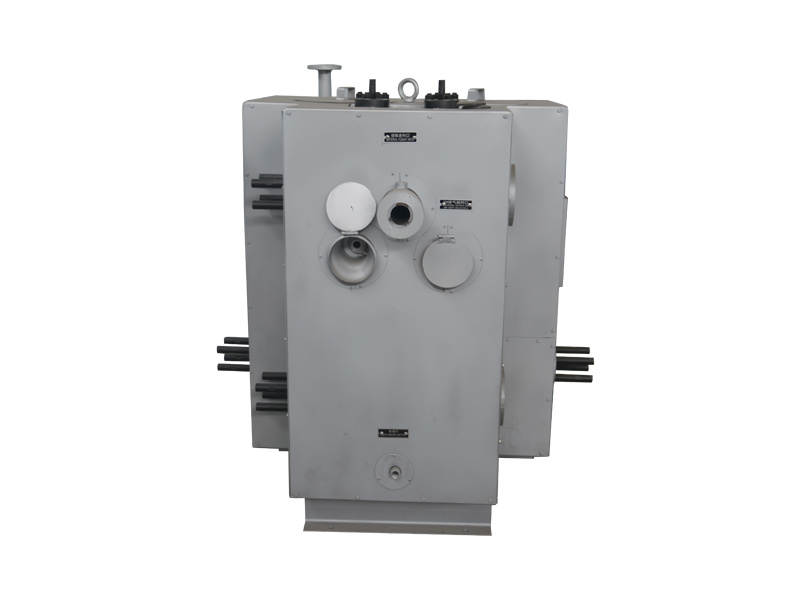Hello, welcome to Jiangsu Main Machinery Technology Co., Ltd.!
Telephone:0510-86017899 Email:huangqindong@jszhjx.cn
What are the characteristics of a fully automatic filter? How does it work?
Release Date:
2022-05-10
Fully automatic filters are also known as automatic self-cleaning filters, backwashing filters, and automatic sewage filters in the market. Automatic filters are divided into vertical and horizontal types, and according to the driving method, they are divided into pneumatic and hydraulic drive; automatic filters are roughly divided into types I and II according to their functions.
Fully Automatic Filter Also known as automatic self-cleaning filter, backwashing filter, automatic sewage filter in the market. Automatic filters are divided into vertical and horizontal types, and according to the driving method, they are divided into pneumatic and hydraulic drive; automatic filters are roughly divided into two types, I and II, according to their functions. Type I: Automatic pressure difference identification, automatic filtration, automatic cleaning, automatic drainage, automatic shutdown, continuous water supply during cleaning. Type II: In addition to all the functions of Type I equipment, the automatic sewage filter also has the functions of descaling, anti-scaling, sterilization, and algae removal. It is a comprehensive water treatment equipment for circulating water systems, with a descaling rate of 95%, a sterilization and algae removal rate of 90%, and high filtration efficiency; automatic filters are mostly used in water treatment for steel, chemical, metallurgical and power industries.

Fully Automatic Filter This is how it works:
The filter medium enters from the inside of the filter cartridge. After multi-layer filtration, the solid suspended matter in the liquid is trapped in the inner wall of the filter cartridge. As the dirt gradually increases, the pressure difference between the inlet and outlet of the filter increases. When the pressure difference of the fully automatic self-cleaning filter reaches the set value (0.01-0.10Mpa), the drain port turns to the bottom of a certain filter cartridge, and the drain valve opens at the same time, causing the pressure inside the filter cartridge to drop sharply. At this time, the pressure difference between the inside and outside of the filter cartridge increases rapidly. The external pure water performs a strong backwashing on the filter cartridge, and the dirt inside the filter cartridge can be thoroughly cleaned instantly. Then, the drain nozzle is moved to the next filter cartridge for backwashing, until all the filter cartridges are cleaned, and the pressure difference of the fully automatic self-cleaning filter returns to the set state.
The coarse and fine screens of the automatic filter are made of stainless steel welded mesh, and the screen plate and screen form an inner and outer double-layer structure; due to the active cleaning of the filter element, the anti-interference ability is enhanced, suitable for use in conditions with poor water quality.
The water to be treated enters the automatic filter through the inlet, and the impurities in the water accumulate on the stainless steel mesh, generating a pressure difference. The pressure switch is used to monitor the pressure difference between the inlet and outlet. When the pressure difference reaches the set value, the controller sends a signal to the hydraulic valve and the drive motor, causing the following actions: the motor drives the brush to rotate, the filter element is cleaned, and the control valve opens for drainage. The entire cleaning process only takes a few tens of seconds. After cleaning, the control valve closes, the motor stops rotating, and the system returns to its initial state, starting the next filtration process.
Fully Automatic Filter After installation, the staff will perform debugging, setting the filtration time and cleaning switching time. The water to be treated enters the machine body through the inlet, and the filter starts to work normally. When the preset cleaning time is reached, the controller will send a signal to the hydraulic control valve to drive the motor. The motor will cause the following actions: the motor drives the brush to rotate, cleaning the filter element, and at the same time, the control valve opens for drainage. The entire cleaning process will only last a few tens of seconds. After cleaning, the control valve will close, and the motor will stop rotating.
→ Related News

